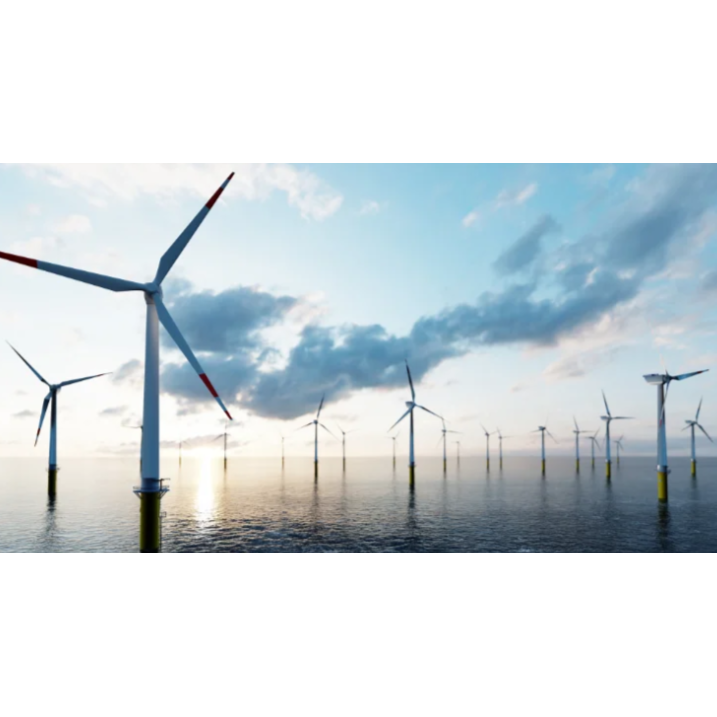China Energy Storage Network: In recent years, with the vigorous development of the domestic new energy market, the large-scale grid connection of renewable energy such as photovoltaic and wind power has also increased the demand for energy storage configuration on the source and grid side.
However, the intermittent, periodic and unstable characteristics of renewable energy have brought challenges to the power grid, such as wind power curtailment and grid connection safety issues.
As the key to solving these problems, energy storage technology has the functions of time-sharing energy storage and release, which can effectively achieve the smooth output of renewable energy, peak load shaving and valley filling of the power grid, user-side energy management and balance of power load. This is not only an important part of the new power system, but also a key technology to promote the large-scale utilization of renewable energy.
In the field of new energy storage technology, carbon dioxide energy storage technology (CAES), as an important branch of compressed air energy storage technology, has received extensive attention and research in the domestic market in recent years.
This technology compresses air and stores it in underground caves or gas tanks, releases air when needed, and drives the generator to generate electricity through the expander, thereby realizing energy storage and release. Due to its economic and efficient technology, carbon dioxide energy storage may play a more important role in the future energy system.
01. Green pillars of new power systems
The 2024 government work report emphasizes the importance of developing new energy storage technologies to support the transformation of energy structure and achieve carbon neutrality goals. Carbon dioxide energy storage technology, as one of the innovative physical energy storage methods, is gradually becoming a key force in promoting the development of new quality productivity.
The carbon dioxide energy storage system uses the physical phase change of carbon dioxide to store and release electrical energy. At a specific phase change temperature and pressure, the phase change process of carbon dioxide has no time limit, which means that the energy storage system can continuously store and release energy.
Since the core equipment of the system is rotating machinery, its working principle is similar to that of thermal power units, and it can achieve long-term uninterrupted work. A significant advantage of this energy storage technology is its flexibility. It can cover small projects from 10MW to large projects at GW level, providing solutions of different power and capacity.

Carbon dioxide energy storage system schematic diagram
Carbon dioxide energy storage can provide a variety of services such as peak shaving, frequency regulation, backup and black start for power grid operation. It can significantly improve the flexibility and security of the power system and is a supporting technology for the construction of new power systems.
It can not only be matched with new energy sources such as solar energy and wind power, effectively making up for their inability to provide stable and continuous power supply, but can also be used with traditional thermal power as a power compensation for small load conditions when traditional thermal power is flexibly operated, which can significantly improve Unit peak shaving capacity and comprehensive energy utilization efficiency.
02. Where is the “new productivity” in the energy storage industry reflected?
ˆ Grid friendliness
Judging from the current energy storage technology routes, carbon dioxide energy storage is one of the most grid-friendly energy storage technology routes, which is mainly reflected in the following three aspects.
˜Efficiency, power, and capacity stability are all combined. The power grid is the artery that connects the power supply side and the load side. Therefore, the safe and stable operation of the power grid is the ultimate goal of all dispatch plans. As the proportion of new energy power increases, problems such as low inertia, high fluctuation, and weak support have a negative impact on the smooth operation of the power grid. This brings huge challenges. Studies have shown that there will be no typical attenuation in the efficiency and power of the system during its life cycle, and the system operates in a closed cycle, and there will be no typical attenuation in the system capacity.
It operates stably in different seasons. The carbon dioxide energy storage system itself is designed with a heat preservation and pressure preservation mechanism, and the system adopts a closed cycle. Therefore, the system operation is not affected by the external environment and climatic conditions, its own efficiency can be fully guaranteed, and it can be stable in different geographical environments and different climatic conditions. Contribute.
The power unit and capacity unit of the carbon dioxide energy storage system are decoupled. This design feature allows the system to be independently expanded on one side. The system can expand the power of the charging unit to achieve fast charging and slow discharging; it can also expand the power of the discharging unit to achieve slow charging and fast discharging; it can also expand the capacity unit independently to achieve free expansion of the energy storage duration. The system can be implemented according to different power grid dispatching needs. Differentiated configurations to meet the needs of different scenarios.
ˆHigh cost performance
CO2 energy storage technology shows significant advantages in terms of flexibility and economy. Compared with traditional compressed air energy storage and liquefied air energy storage technologies, carbon dioxide energy storage provides lower life cycle costs and higher system efficiency. The cost of 1 kilowatt hour of electricity can be reduced to 0.15 yuan/kWh, and the electricity-to-electricity efficiency of energy storage can reach 75%, which is very competitive in energy storage technology.
Deep coupling with industrial processes. Carbon dioxide energy storage technology is innovatively and deeply coupled with Conch Cement’s Carbon Capture, Utilization and Storage (CCUS) system. Through this coupling, the carbon dioxide captured during the cement production process is not only used for energy storage to achieve temporary storage, but also reduces the cost of the energy storage system, while reducing the cost of carbon storage and promoting the recycling of carbon dioxide.
Waste heat recovery and energy conservation. The carbon dioxide energy storage system can use the heat of flue gas below 110°C generated during the cement production process to convert the waste heat into electricity, which can be directly supplied for production use. This method of systematically utilizing low-grade waste heat effectively solves the problem of insufficient utilization of low-grade waste heat in cement plants. It is expected to save the company about 1,565 tons of standard coal every year, significantly improving energy utilization efficiency.
“Large capacity, long time”
As a new type of energy storage technology, carbon dioxide energy storage has the characteristics of “large capacity and long time” compared with traditional energy storage.
The energy storage time can reach 16+ hours (according to the charging and discharging time, energy storage technology is generally divided into "short-term energy storage" (<4 hours) and "long-term energy storage" (≥4 hours) in China. The energy release power It can reach the GW level and is suitable for large-scale long-term energy storage. It has the characteristics of high electricity-to-electricity conversion efficiency, high energy storage density, and long life. It can meet the needs of large-scale power consumption of renewable energy, grid peak shaving and valley filling, and thermal power storage. It can meet huge market demands such as peak shaving and has good economic and social benefits.
03. Multi-scenario energy storage space development
The "14th Five-Year Plan" New Energy Storage Development Implementation Plan" proposes technologies such as extraction steam storage of thermal power and nuclear power units, as well as the engineering application of hundreds of megawatts of compressed air energy storage technology, marking China's progress in new energy storage technology. important progress in the field.

In this context, a 100MW-class carbon dioxide energy storage system has become one of the key technologies to achieve the goals of this program.
Take a 100MW/400MW•h carbon dioxide energy storage system as an example. "100MW" represents the power generation of the system when it is running at full load, while "400MW•h" represents the energy storage capacity of the system, that is, the system can store and provide 400 megawatt-hours of electricity.
This energy storage capacity is equivalent to 400,000 kWh of electricity. According to the monthly electricity consumption of 350 to 450 kWh of an ordinary household, the system completes a complete charge and discharge cycle and can provide electricity needs for nearly 1,000 households for one month.
The efficiency of the system is reflected in its fast charging and discharging capabilities. A charging and discharging process can be completed in just a few hours. This not only improves the flexibility of energy utilization, but also provides strong support for the stable operation and peak-shaving capabilities of the power grid.
Carbon dioxide energy storage is developing multi-scenario application space. The system not only has the functional characteristics of the CAES system, but can also "splice" intermittent energy such as wind power and photovoltaic power to ensure the continuous power output of new energy; it can also be coupled with various energy systems such as CCS and liquefied natural gas (LNG) to achieve multi-scenario application and efficiency improvement of carbon dioxide energy storage. In general, accelerating the development of "new quality productivity" in the energy storage industry will help promote the construction of energy storage innovation space.
04. Opening the milestone of engineering application
Faced with the global energy transformation and the urgent need for clean energy storage technology, carbon dioxide energy storage technology has shown great industry appeal with its long-term, stable and efficient energy storage capacity. As an innovative physical energy storage method, it can not only improve the stability of the power grid, but also become one of the key technologies to promote the transformation of energy structure towards a sustainable direction due to its environmental protection characteristics and potential economic benefits.
The successful grid-connected commissioning of the 10MW/80MWh CO2 energy storage demonstration system project of Conch in Wuhu, Anhui, the 40MW/160MWh CO2 energy storage demonstration project in Golmud, Qinghai, and the 100MW/200MWh new CO2 energy storage project in Xiangzhou, Hubei, all indicate that domestic CO2 energy storage technology has entered the stage of commercial application on a global scale.
In the process of building a new power system, the development of energy storage technology has shown a diversified trend. Various energy storage technology routes, including chemical energy storage, physical energy storage, mechanical energy storage, etc., are constantly exploring and innovating to show their respective advantages and characteristics. Provide more options for the flexibility and reliability of the power system. Technological innovation is the "source power" of industrial upgrading. The diversity and complementarity of various technical routes will provide strong technical support for realizing energy transformation and improving the level of grid intelligence.
[Editor: Ouyang Yong]
 Pages you might like
Pages you might like








 Exhibitions you may be interested in
Exhibitions you may be interested in
 Latest information
Latest information
 Follow official account
Follow official account
 Online support
Online support
 鄂ICP备2022017323号
鄂ICP备2022017323号
 鄂公网安备 42018502006493
鄂公网安备 42018502006493
 Launch Exhibition
Launch Exhibition
 Release information
Release information



 Today's topic
Today's topic









